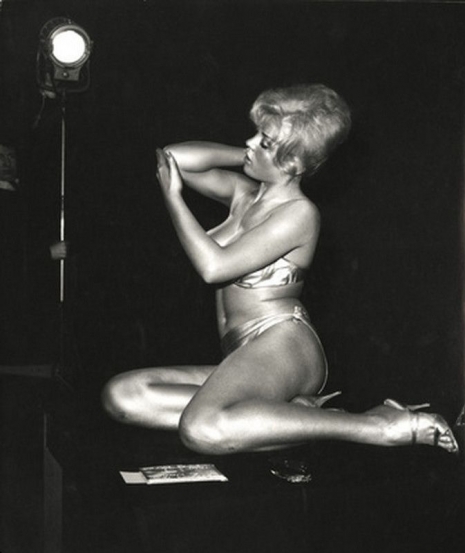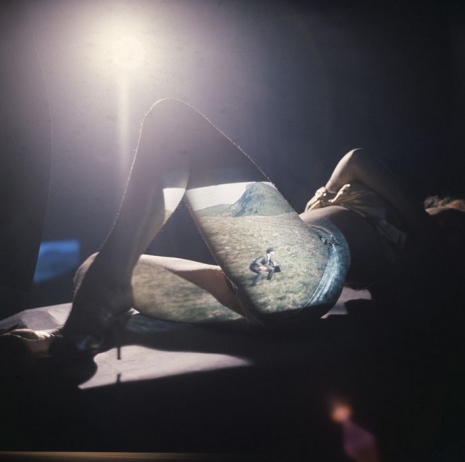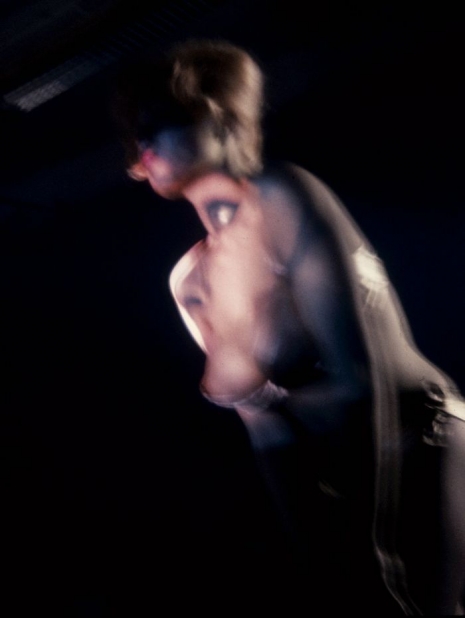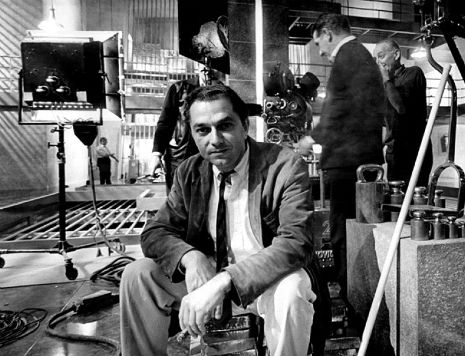
Golden girl Margaret Nolan covered in gold paint on the set of ‘Goldfinger.’
Pin-up model and aspiring the dangerously curvy actress Margaret Nolan was only twenty-years-old when she landed a the gig of the girl that the Bond visual and graphic artist Robert Brownjohn got to cover in gold paint for the racy opening title sequence in the 1964 film, Goldfinger.

Margaret Nolan being used as a canvas for a projector for the title sequence of ‘Goldfinger.’
Earlier this week I posted about the title sequences from many of the Bond films (sans credits) that both Brownjohn and the primary title sequence artist behind the rest of the Bond films up unitl 1989, Maurice Binder, created, and got caught up in the various folklore associated with the franchise. Specifically when it came to Brownjohn’s work on Goldfinger. His subject matter for the title sequences to Goldfinger seemed so suggestive the it was the first title sequence in the history of film to require an thumbs-up from a film censor. Clad in a gold leather bikini Nolan says that in all that the shoot took two to three weeks to complete. As part of her agreement to pose for the risqué segment she received a part in the film playing a brief role as “Dink,” a masseuse. Since I’m sure you’re curious Nolan said that while she found Sean Connery “lovely” he was more interested in getting busy with her identical twin sister. Because that’s how James Bond rolls. (Why not try to shag both of them, Bondy?)
The actual “golden girl” in the movie, “Jill Masterson” was played by actress Shirley Eaton who appeared on the cover of LIFE magazine painted gold. Her character’s death—caused by skin suffocation from being painted head to toe in gold pain—led to the “urban myth” that the actress herself had died during the filming. Eaton appeared in an episode of MythBusters to disprove the rumour.
The Goldfinger title sequence cost approximately $6,500 and the hard-partying Brownjohn used every last penny to create one of the most memorable moments in cinema history. The images you are about to see (some of which are slightly NSFW) were taken on the set by Herbert Spencer (the founding editor of pioneering graphic design journal Typographica) and were shown back in 2013 at MoMA as a part of the exhibition Goldfinger: The Design of an Iconic Film Title. As I mentioned previously I’m a huge James Bond film junkie and I had never seen any of the images in this post until just recently and they are utterly impossible to look away from. Unless you find the image of a beautiful woman painted gold in a barely-there bikini unappealing of course—which seems highly unlikely.


More of the golden girl who “knows when he’s kissed her….” after the jump…






